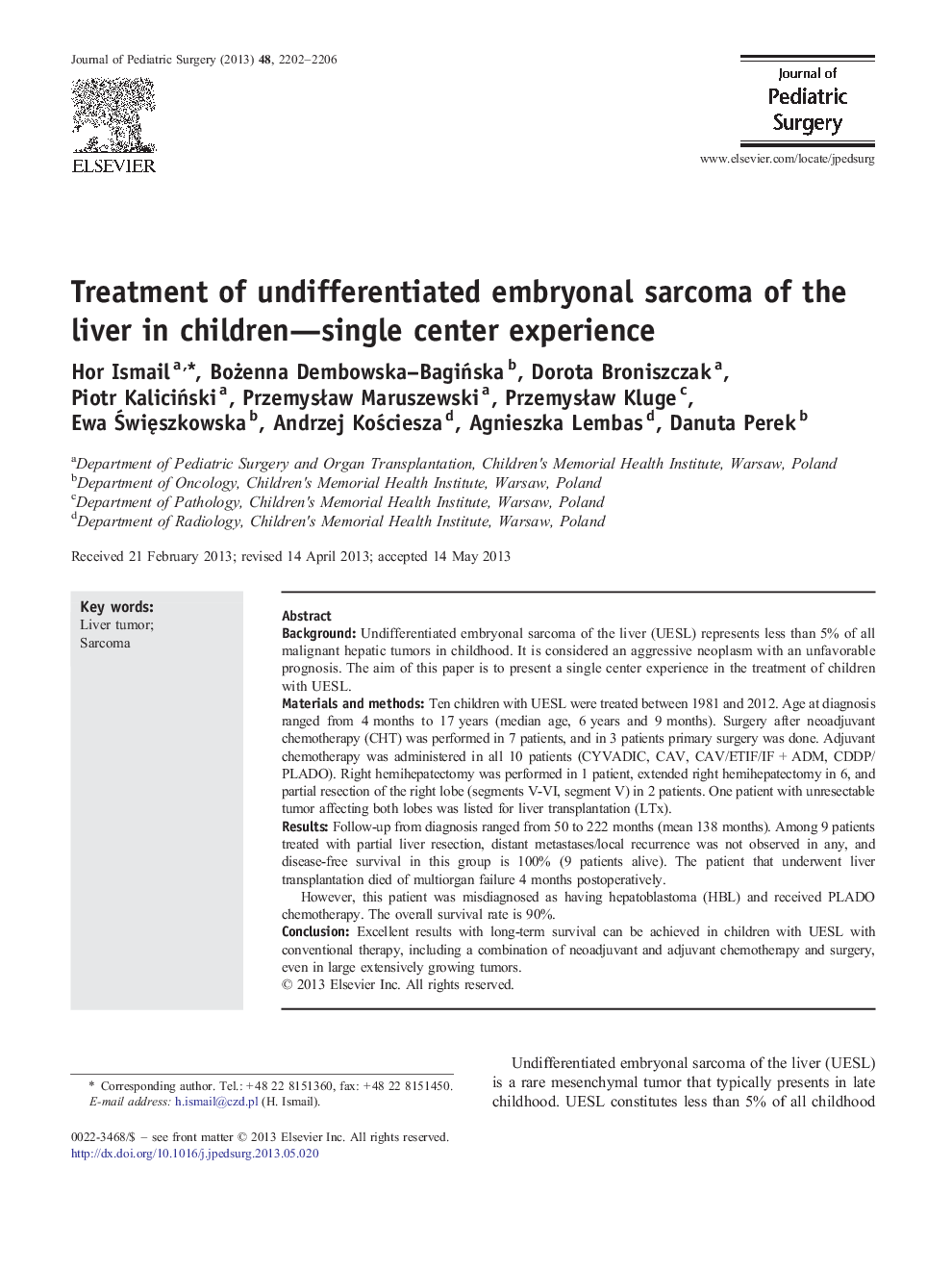| Article ID | Journal | Published Year | Pages | File Type |
|---|---|---|---|---|
| 6217423 | Journal of Pediatric Surgery | 2013 | 5 Pages |
BackgroundUndifferentiated embryonal sarcoma of the liver (UESL) represents less than 5% of all malignant hepatic tumors in childhood. It is considered an aggressive neoplasm with an unfavorable prognosis. The aim of this paper is to present a single center experience in the treatment of children with UESL.Materials and methodsTen children with UESL were treated between 1981 and 2012. Age at diagnosis ranged from 4Â months to 17Â years (median age, 6Â years and 9Â months). Surgery after neoadjuvant chemotherapy (CHT) was performed in 7 patients, and in 3 patients primary surgery was done. Adjuvant chemotherapy was administered in all 10 patients (CYVADIC, CAV, CAV/ETIF/IFÂ +Â ADM, CDDP/PLADO). Right hemihepatectomy was performed in 1 patient, extended right hemihepatectomy in 6, and partial resection of the right lobe (segments V-VI, segment V) in 2 patients. One patient with unresectable tumor affecting both lobes was listed for liver transplantation (LTx).ResultsFollow-up from diagnosis ranged from 50 to 222Â months (mean 138Â months). Among 9 patients treated with partial liver resection, distant metastases/local recurrence was not observed in any, and disease-free survival in this group is 100% (9 patients alive). The patient that underwent liver transplantation died of multiorgan failure 4Â months postoperatively.However, this patient was misdiagnosed as having hepatoblastoma (HBL) and received PLADO chemotherapy. The overall survival rate is 90%.ConclusionExcellent results with long-term survival can be achieved in children with UESL with conventional therapy, including a combination of neoadjuvant and adjuvant chemotherapy and surgery, even in large extensively growing tumors.
